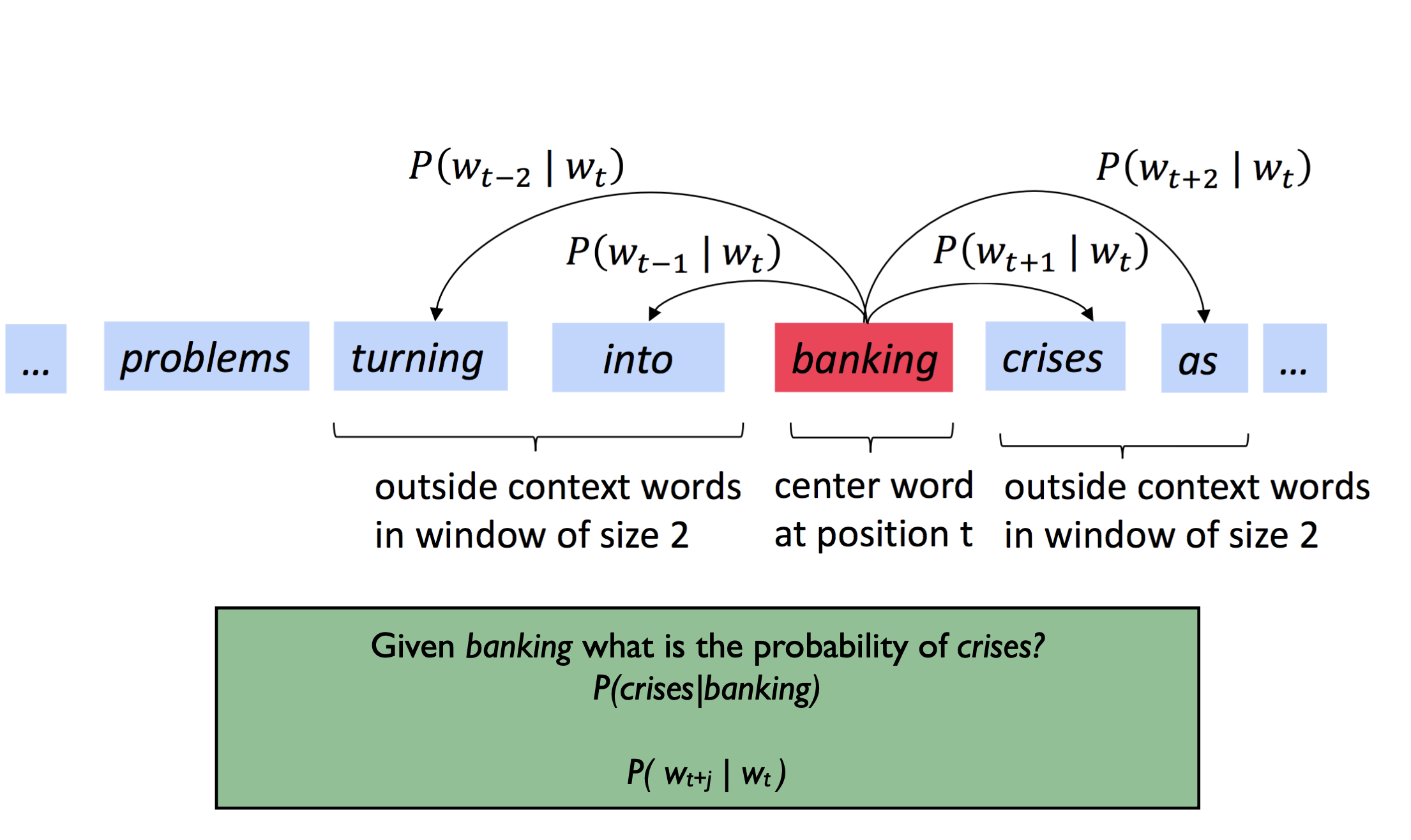Vector Semantics
1/15
There's no tags or description
Looks like no tags are added yet.
Name | Mastery | Learn | Test | Matching | Spaced |
|---|
No study sessions yet.
16 Terms
Word distributions: meaning and similarity
If A and B occur in similar environments then they probably have similar meanings. How words are distributed relative to other words can tell you about what they mean.
Why is word similarity helpful
question answering, google searching, exploring semantic change over time
How to model word distributions
Represent each word as a vector of numeric values, convenient to do mathematical operations on them, vectors can contain weighted counts or more abstract.
Sparse vectors
Derived from co-occurrence matrices, word-word matrix or term-document matrix. Values are counts or weighted counts. And contain a lot of zeros.
Dense vectors
values do not have a concrete meaning but represent a word’s location in semantic space, singular value decomposition, neural network inspired models.
Term document matrix
You have a bunch of documents you are interested in. Count how many times different words appear in each document. Words that appear in the same documents and don’t appear in the same documents are likely to be related. Documents that have the same words might be about similar or related topics.
Word-word co-occurrence matrix
Step1: get a huge corpus of text
Step 2: Count how often each word co-occurs (eg appears in the same five word window) with each other word. You end up with a |V| x |V| matrix where V is the vocabulary which contains 10s or 100s of 1000s of words. Every word has a vector of |V| values most of which are zero. You can compare the vectors with cosine similarity.
Comparing vectors: cosince similarity
Two docs or words are similar is their vectors are close together. A vector is close to another if the angle is small and hence the cosine of the angle between them is large.
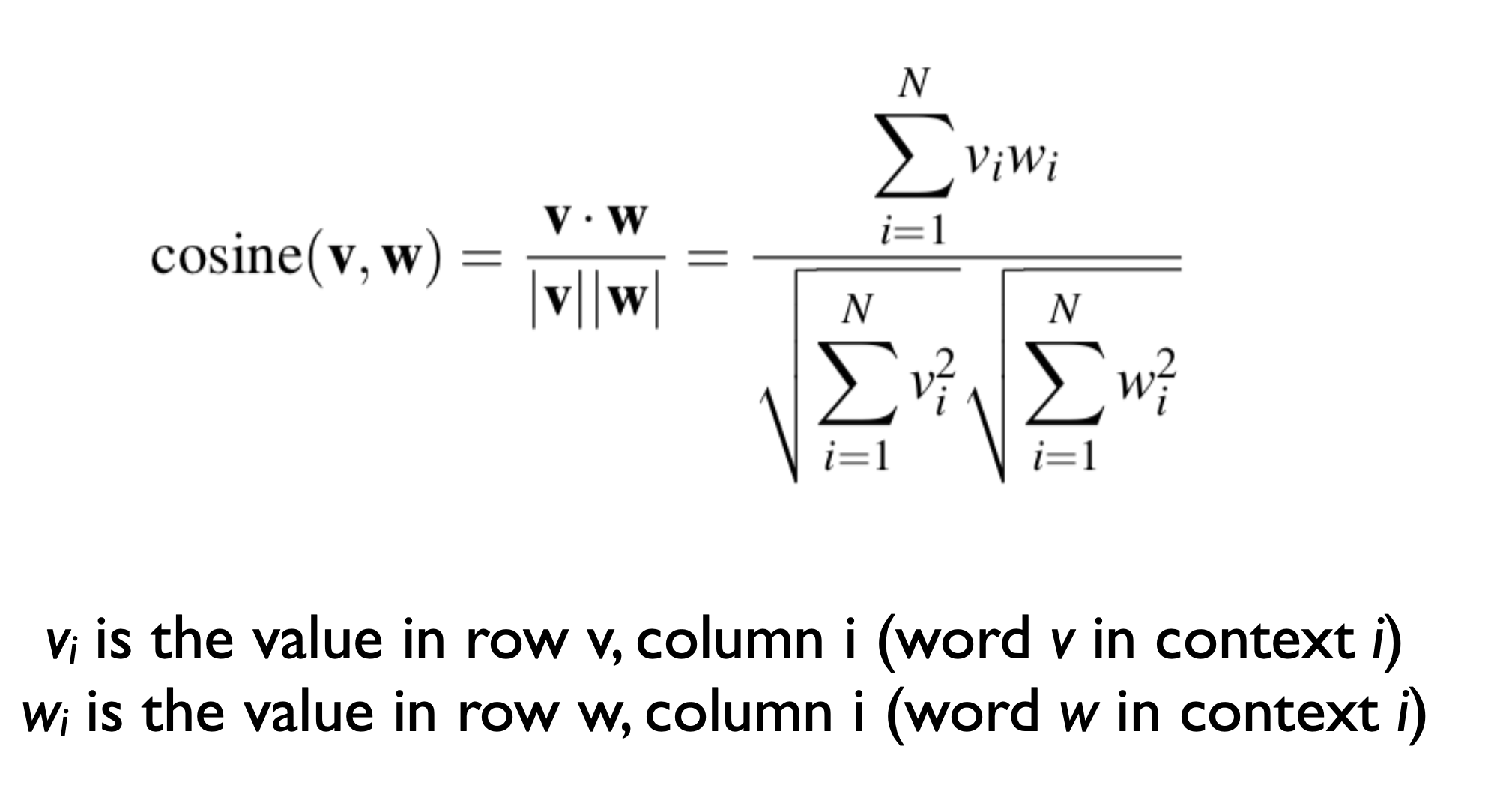
Other similarity metrics
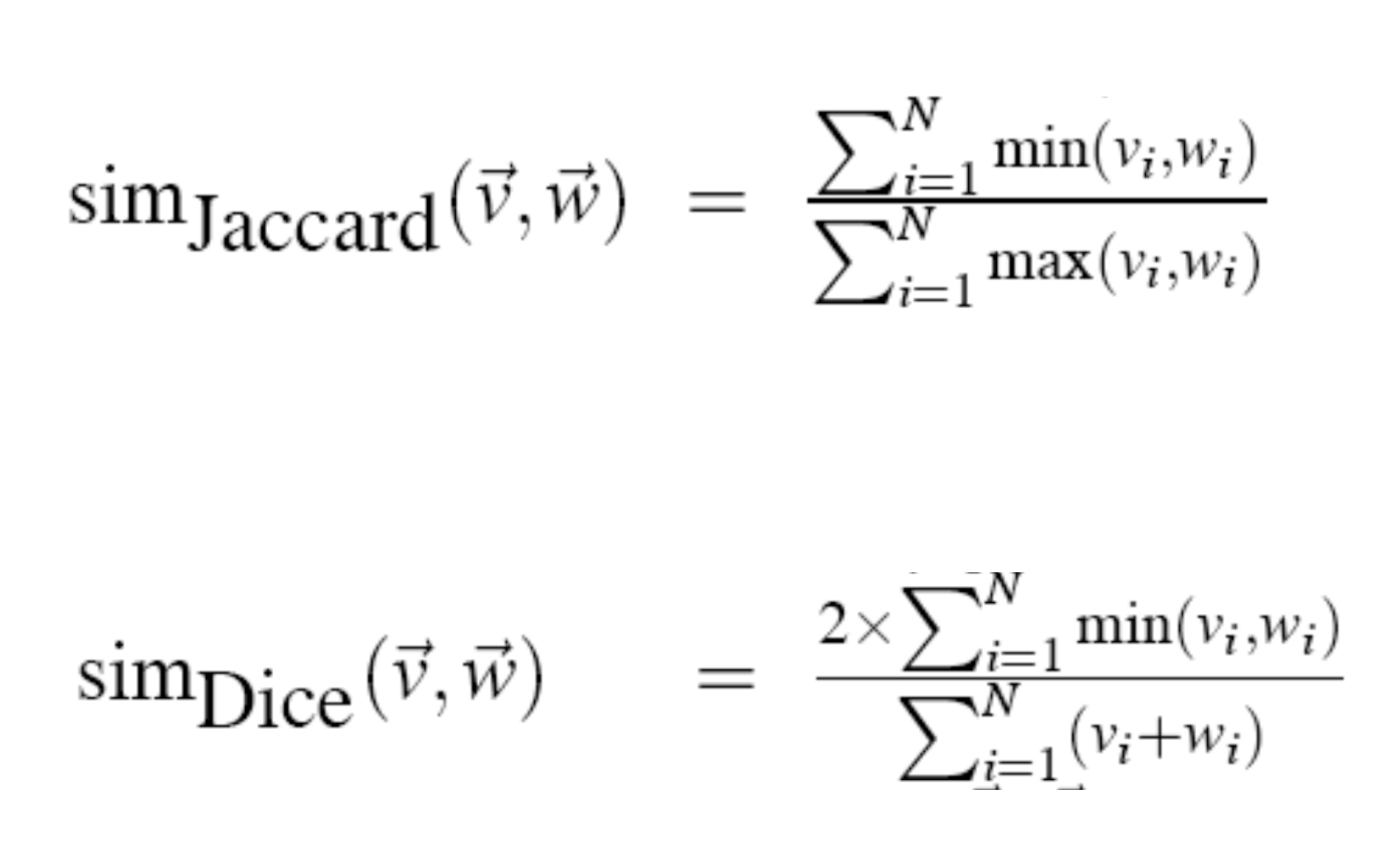
PMI
Pointwise mutual information can also go into the matrix. PMI calculation do x and y co-occur more than if they were independent? Problem with PMI is negative values do not correspond to dissimilarity, so if it is negative just say it is zero and get PPMI.
Step1: Turn counts into probabilities
Step 2: Using probabilities calculate ppmi for each cell
Step 3: Now use these vectors to see how close two words are like cosine similarity
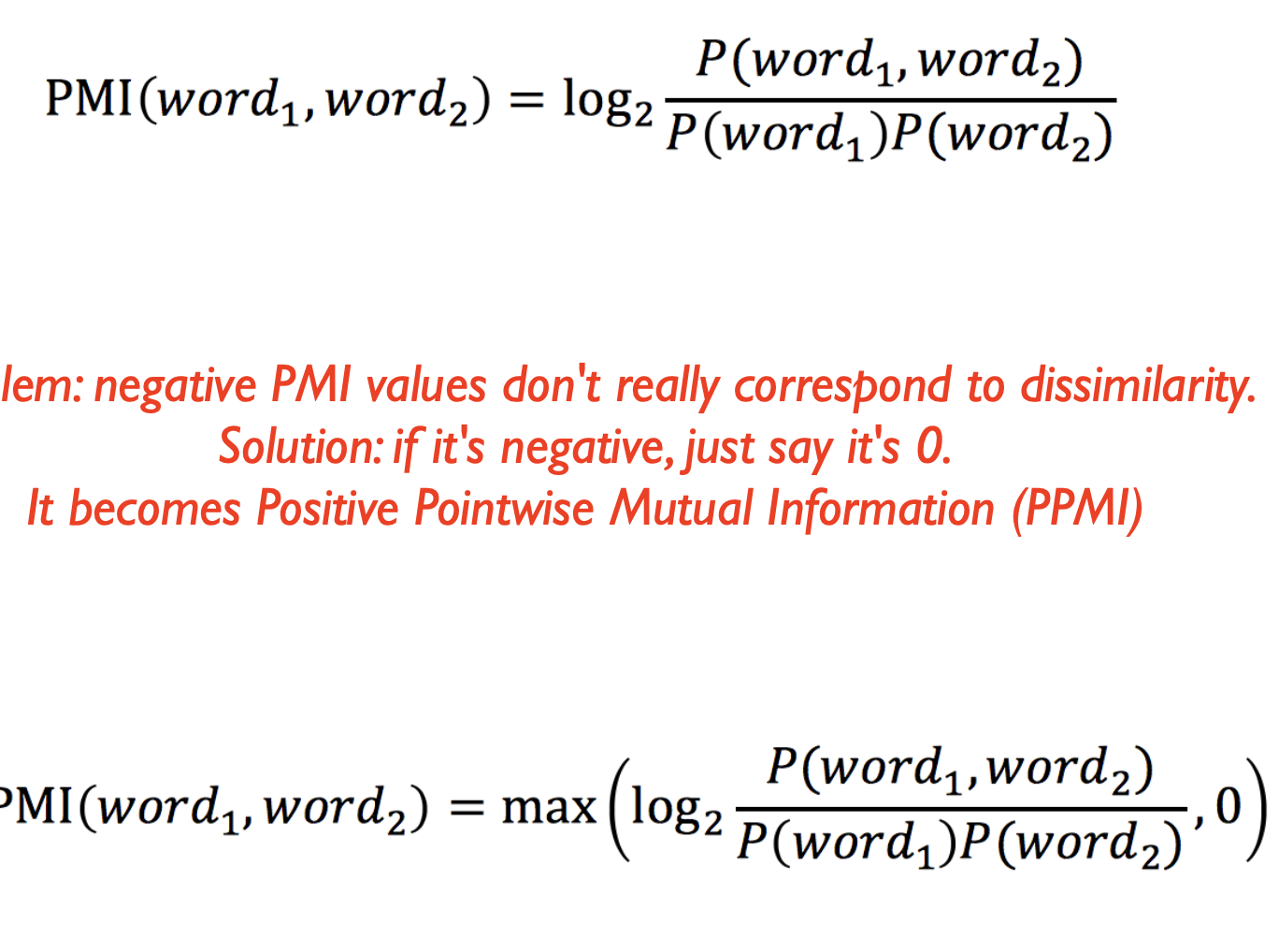
tf-idf
In term document matrix you can replace counts with a normalized version of that count. tf-idf is term frequency inverse document frequency. Divide the count by the number of documents this word appears in. Normalize counts like this because some words appear often in all documents, dividing by the number of documents the word appears in gives this words much less weight.
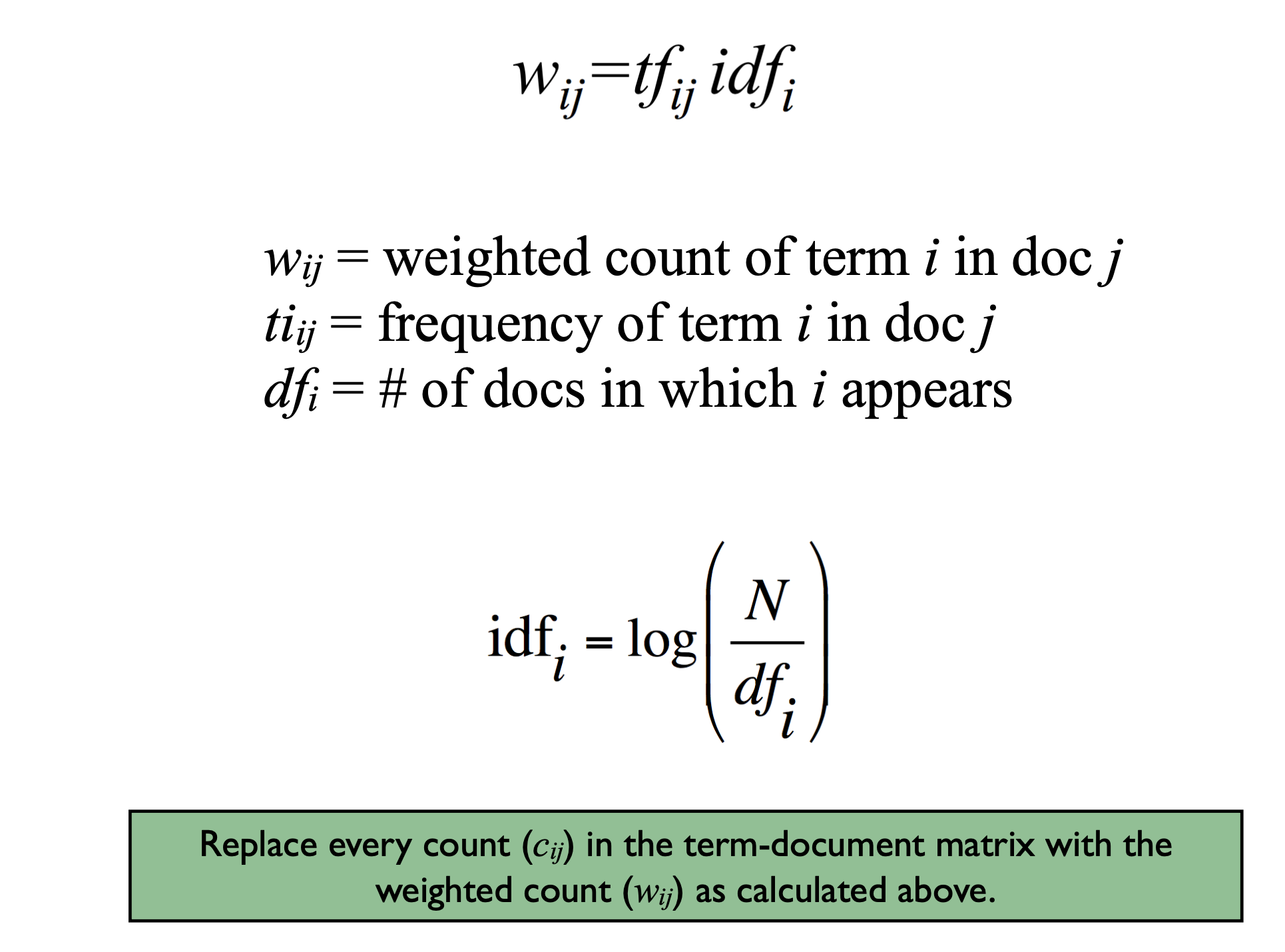
Sparse vs Dense vectors
sparse: many dimensions (10K-100K) and many zeros
dense: fewer dimensions (100-1000), most elements are not zero
Advantages of dense vectors
Easier to use as features in ML since there are fewer features. Only 100-1000 values to store each word, fewer dimensions lead to faster math.
How do you get dense vectors
Single value decomposition (SVD) : latent semantic analysis LSA
Nerual predictive models: continuous bag of words, skipgrams, word2vec, skipgrams
SVD
Goal is to reduce the number of dimensions. It is a family of methods for dimensionality reduction which include principal component analysis (PCA) and factor analysis. Start with full term document matrix or word-word co-occurrence matrix. Rotate the matrix to where you find the dimension that accounts for the most variability. Rotate again to find the dimension that counts for second most variability and so on.
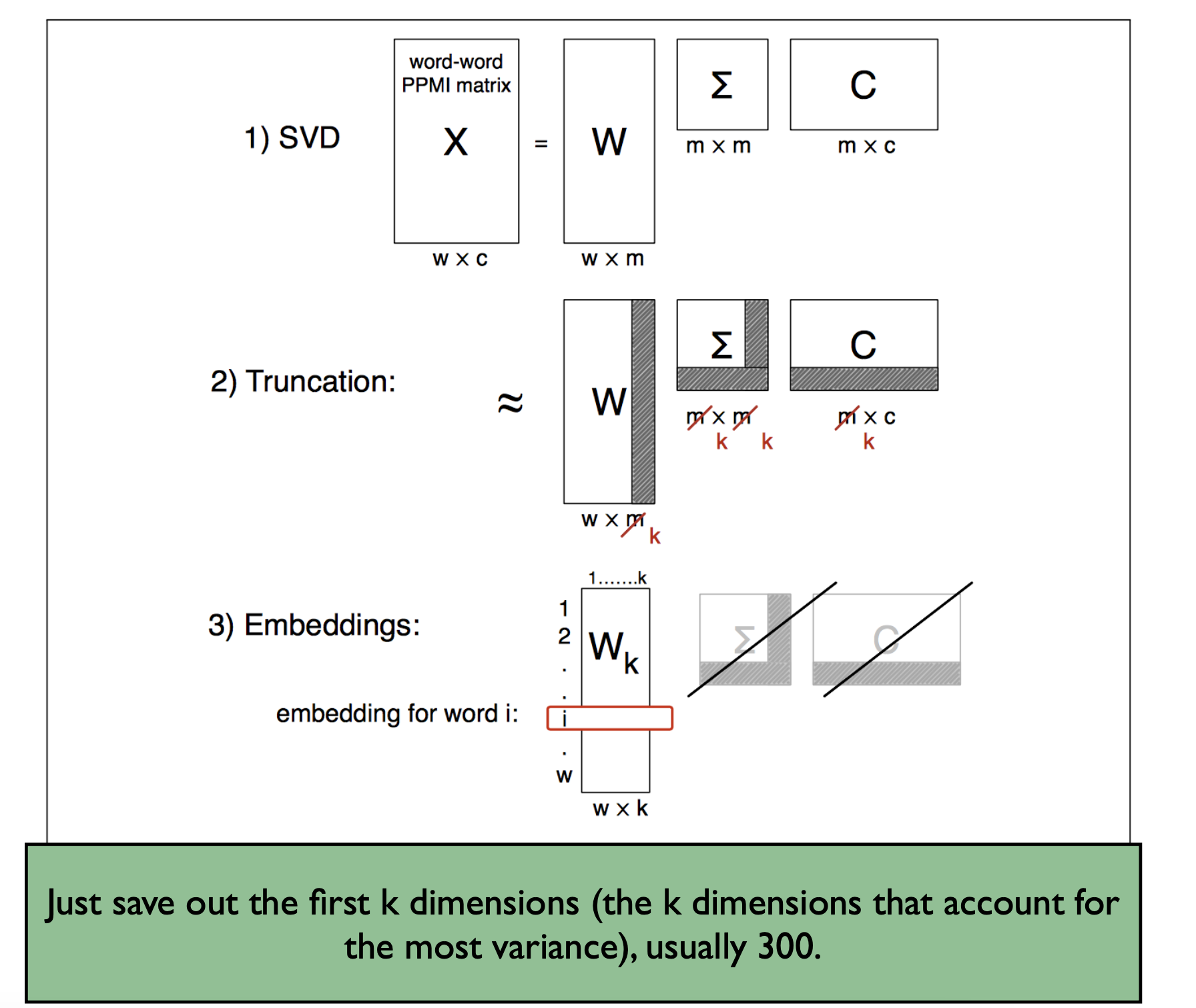
Neural word embeddings
Don’t actually build a term-term co-occurrence matrix. Instead build neural net classifier that determines the best word given a particular context. Words that have a similar context are likely to be similar in some way .
